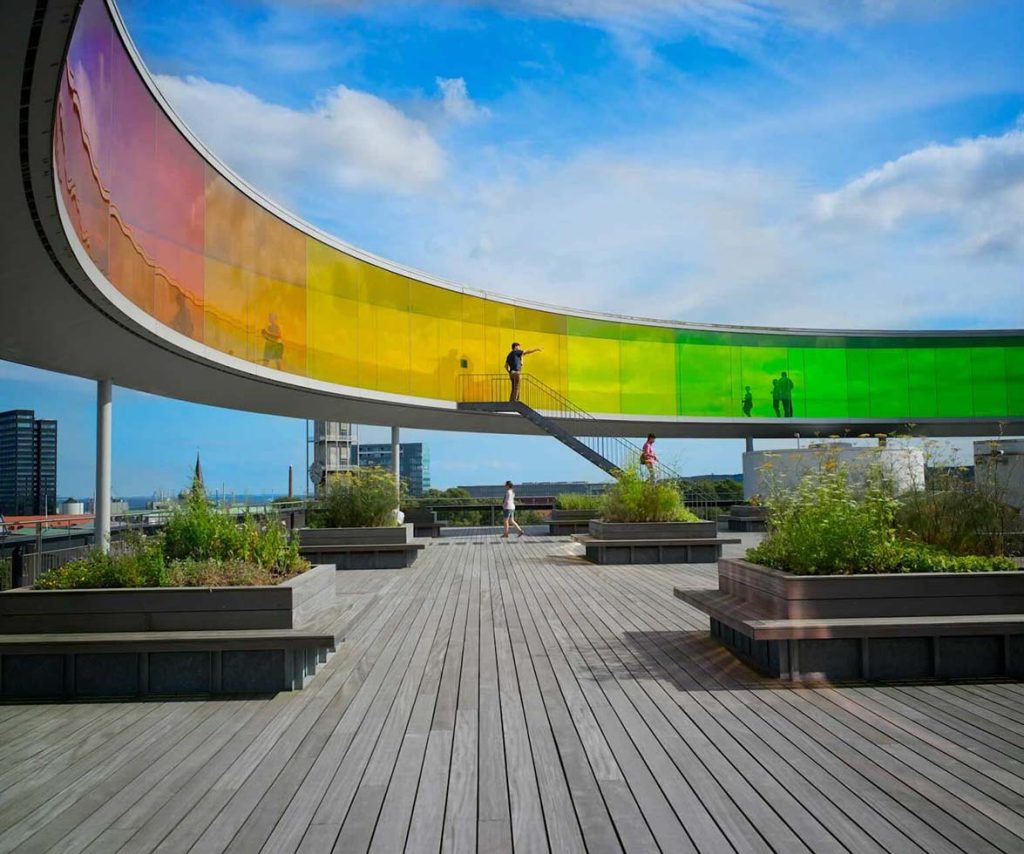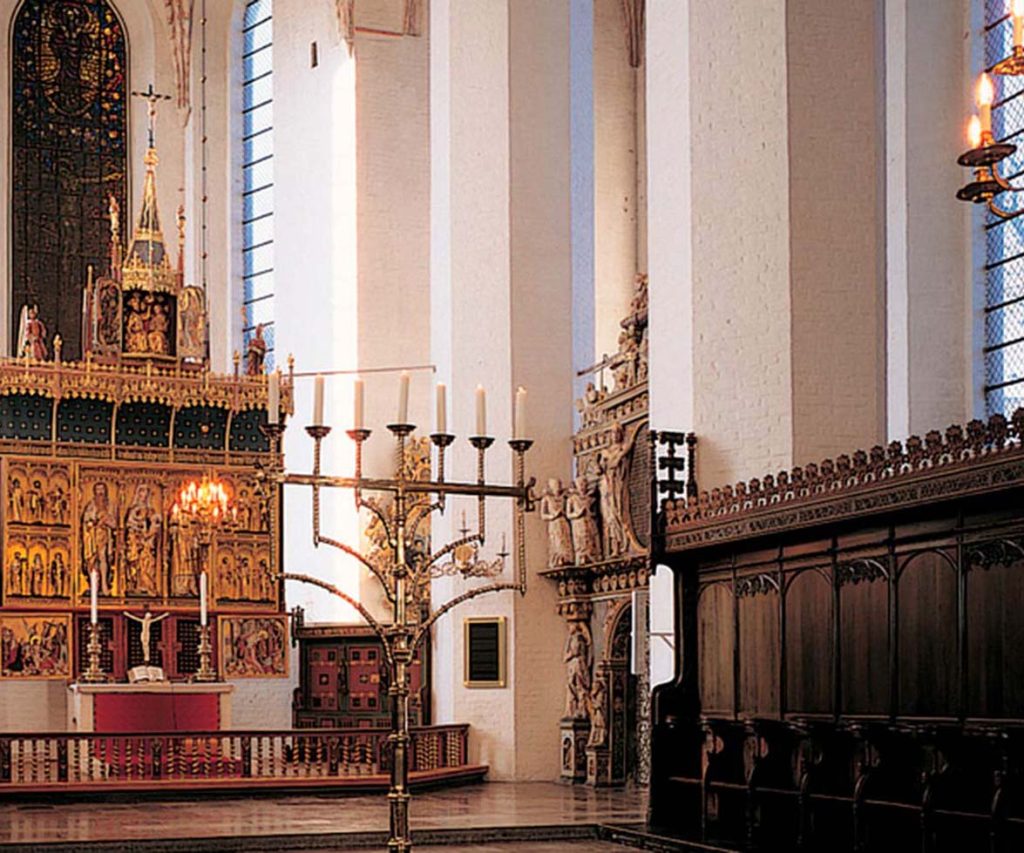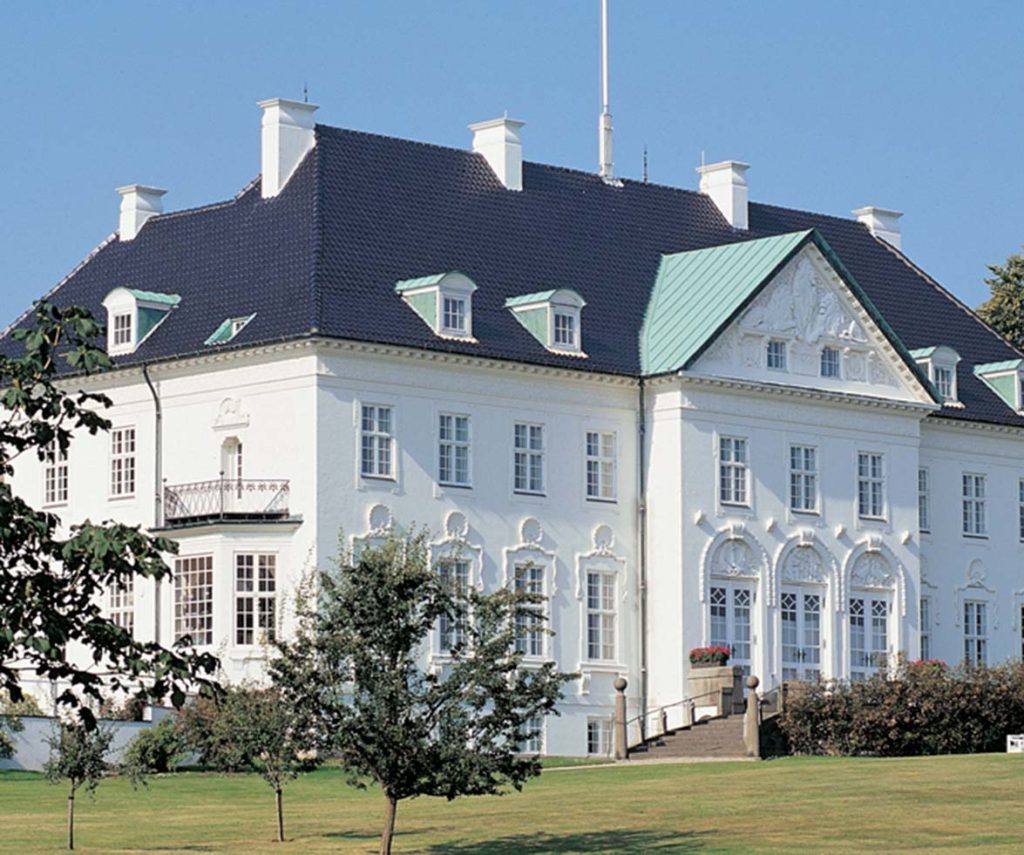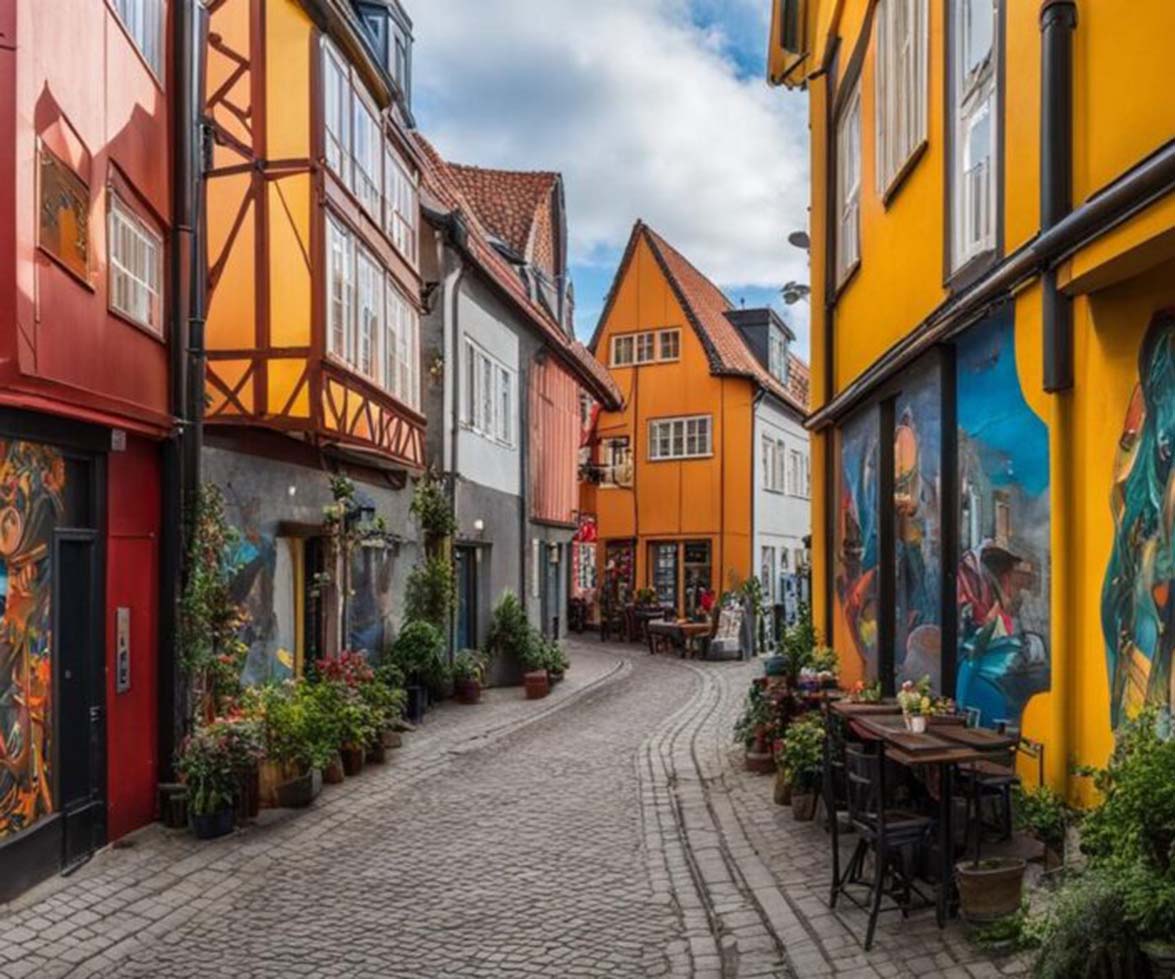Aarhus, Denmark’s second-largest city, is filled with charm, history, and a vibrant cultural scene. From its stunning modern architecture to historical landmarks, Aarhus offers a diverse array of attractions that are perfect for travelers seeking an authentic Danish experience. After spending a few days exploring the city’s highlights, I’m excited to share some must-see spots in this beautiful city.
1. ARoS Aarhus Art Museum
The ARoS Aarhus Art Museum is one of the largest art museums in Northern Europe, and it’s an essential stop for anyone interested in contemporary art. Located right in the city center, it’s easily accessible by foot or bike.

When I first approached the building, I was struck by its striking, modern design, particularly the iconic “Your rainbow panorama”—a circular walkway of multicolored glass that crowns the museum. Once inside, I spent hours wandering through the museum’s diverse exhibitions, which range from classic Danish paintings to cutting-edge modern art installations. Each floor has something new to offer, and I found myself completely immersed in the art.
After exploring the exhibitions, I made my way up to the rooftop for the rainbow panorama. Walking through the different colors and seeing the city through each hue was a mesmerizing experience. You get a 360-degree view of Aarhus, making it the perfect spot for photos or just to take in the cityscape. For art enthusiasts or anyone who enjoys architecture, ARoS is an unforgettable experience.
Getting There: ARoS is located on Aros Allé, and you can easily reach it by walking from Aarhus Central Station.
Tips: Be sure to set aside at least a couple of hours to fully appreciate the museum. The entrance fee is around 160 DKK, but if you have an Aarhus Card, admission is included.
2. The Old Town (Den Gamle By)
Stepping into The Old Town, also known as Den Gamle By, feels like traveling back in time. This open-air museum showcases what life was like in Denmark over the past centuries, with carefully preserved buildings and actors in period costumes.
I began my tour in the 1800s section, where cobblestone streets and half-timbered houses transported me to a time when horses and carriages roamed the roads. Many of the buildings here are original structures that were moved from other parts of Denmark, and you can explore traditional shops, bakeries, and homes. I had the chance to talk with some of the costumed guides who provided fascinating insights into Danish life during the 19th century.
The museum also includes sections dedicated to the 1920s and 1970s, each with era-specific shops, homes, and exhibits. Walking through the 1970s area, with its vintage storefronts and retro decor, was surprisingly nostalgic and offered a fun contrast to the older sections of the museum.
Getting There: Den Gamle By is located on Viborgvej, within a 20-minute walk from the city center, or you can take one of the city buses directly there.
Tips: Plan to spend at least half a day here. There are several cafes inside where you can take a break and enjoy traditional Danish pastries. Admission is typically around 140 DKK, but it varies by season.
3. Aarhus Cathedral (Aarhus Domkirke)
Aarhus Cathedral is the city’s oldest and tallest church, and it’s right in the heart of the city near the main square. Built in the 12th century, this Gothic cathedral has a rich history and stunning architecture.

Walking inside, I was immediately struck by the peaceful ambiance and the incredible detail of the cathedral’s interior. The walls are adorned with beautiful frescoes, many of which date back to the medieval period. As I made my way through, I admired the intricate wood carvings, and the altarpiece—crafted by the famous German sculptor Bernt Notke—is a true masterpiece.
One of the highlights of visiting Aarhus Cathedral was climbing the tower. From the top, I enjoyed panoramic views of the city and the surrounding countryside. It was a quiet, reflective experience, providing a unique perspective of Aarhus.
Getting There: Located on Store Torv, Aarhus Cathedral is easily accessible by foot from the city center.
Tips: Entrance to the cathedral is free, but there’s a small fee if you want to climb the tower. It’s worth checking their schedule as they sometimes hold concerts in the evenings.
4. Moesgaard Museum
Situated a bit outside the city center, the Moesgaard Museum is a world-class archaeological museum that blends historical exhibits with state-of-the-art technology. It’s set amidst beautiful natural surroundings, which makes it a great destination for those who enjoy both history and nature.
I took a bus from Aarhus Central Station to reach Moesgaard. The museum building itself is a sight to behold, with a sloping grass roof that merges into the surrounding landscape. Inside, I explored exhibits covering the prehistoric periods, from the Stone Age to the Viking Age. The displays are incredibly detailed, with interactive features that make the experience engaging for all ages.
One of the museum’s most famous exhibits is the Grauballe Man—a remarkably well-preserved bog body dating back to the Iron Age. Standing just inches away from this 2,000-year-old relic, I was both fascinated and humbled by the sense of history that it conveyed.
Getting There: Take Bus 18 from Aarhus Central Station, and you’ll reach the museum in about 30 minutes.
Tips: Moesgaard Museum has a lovely café with a terrace offering views of the surrounding woods. Plan your visit for a day when you can also enjoy the nearby walking trails.
5. Marselisborg Palace and Gardens
A bit off the beaten path, Marselisborg Palace is the Danish royal family’s summer residence. While the palace itself is only open to the public when the royal family is away, the surrounding gardens are open year-round and are a peaceful escape from the city.

I visited Marselisborg on a sunny afternoon and was immediately taken by the beautifully landscaped gardens. There are numerous pathways lined with colorful flower beds, sculptures, and small ponds. It’s the perfect spot for a leisurely stroll or a quiet afternoon picnic.
When the royal family isn’t in residence, visitors can sometimes catch the changing of the guard. It’s a less formal event compared to the one in Copenhagen, but it adds to the charm of the visit.
Getting There: Located in the southern part of Aarhus, you can take a quick bike ride from the city center or hop on a bus that drops you off nearby.
Tips: There’s no entrance fee to the gardens, but be mindful of the palace’s schedule if you hope to witness the changing of the guard. The best time to visit the gardens is during spring or summer when the flowers are in full bloom.
Aarhus offers an array of attractions that cater to history buffs, art lovers, and outdoor enthusiasts alike. Whether you’re walking through a rainbow panorama, wandering through a 19th-century Danish town, or exploring ancient artifacts, the city is sure to leave a lasting impression. With friendly locals and a laid-back vibe, Aarhus is a perfect destination for those looking to experience the best of Denmark in a more relaxed, intimate setting.
